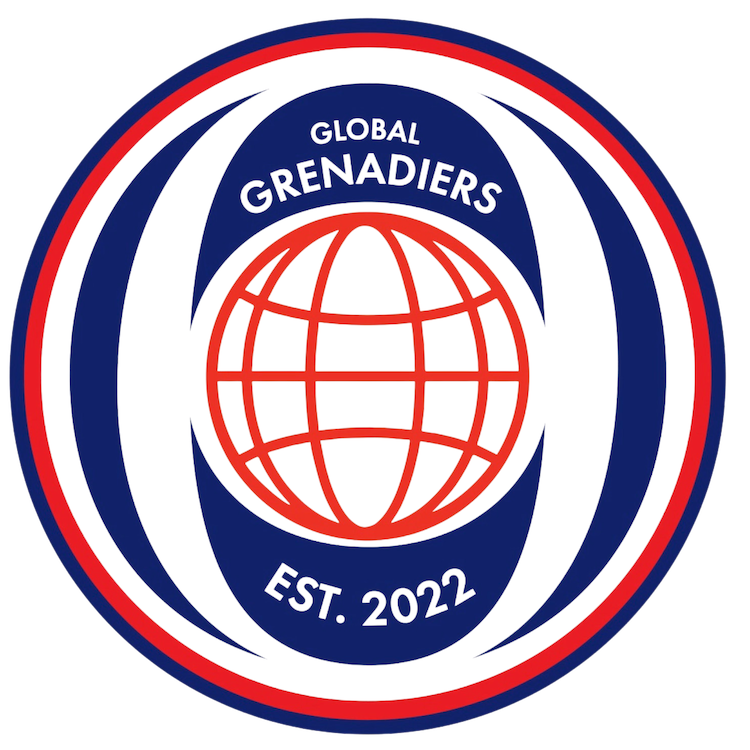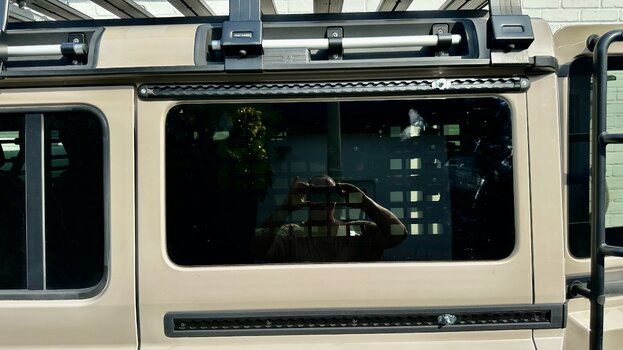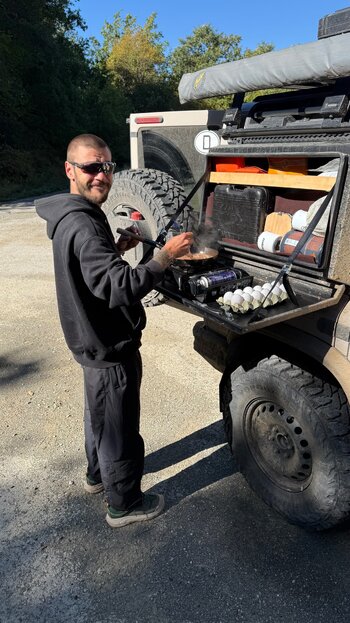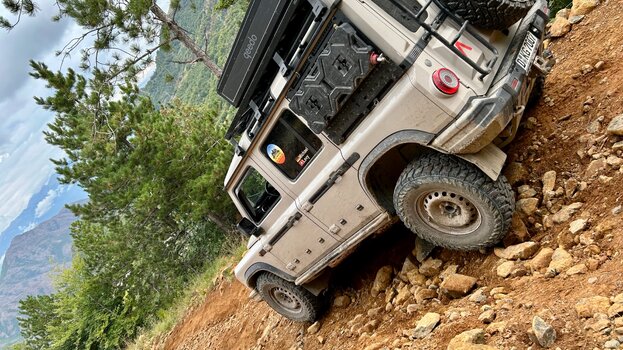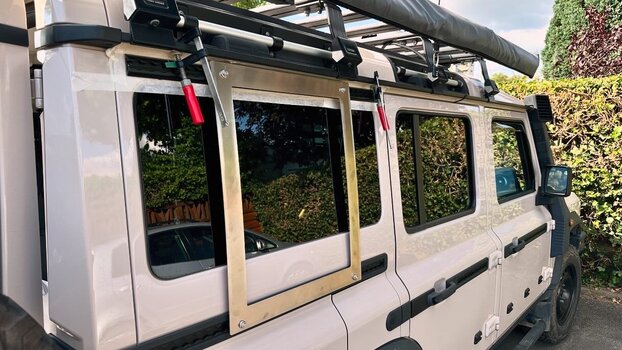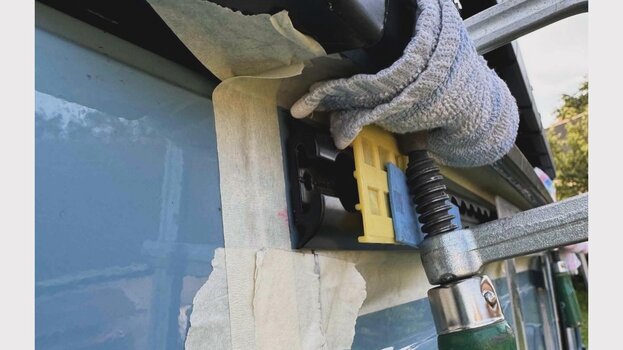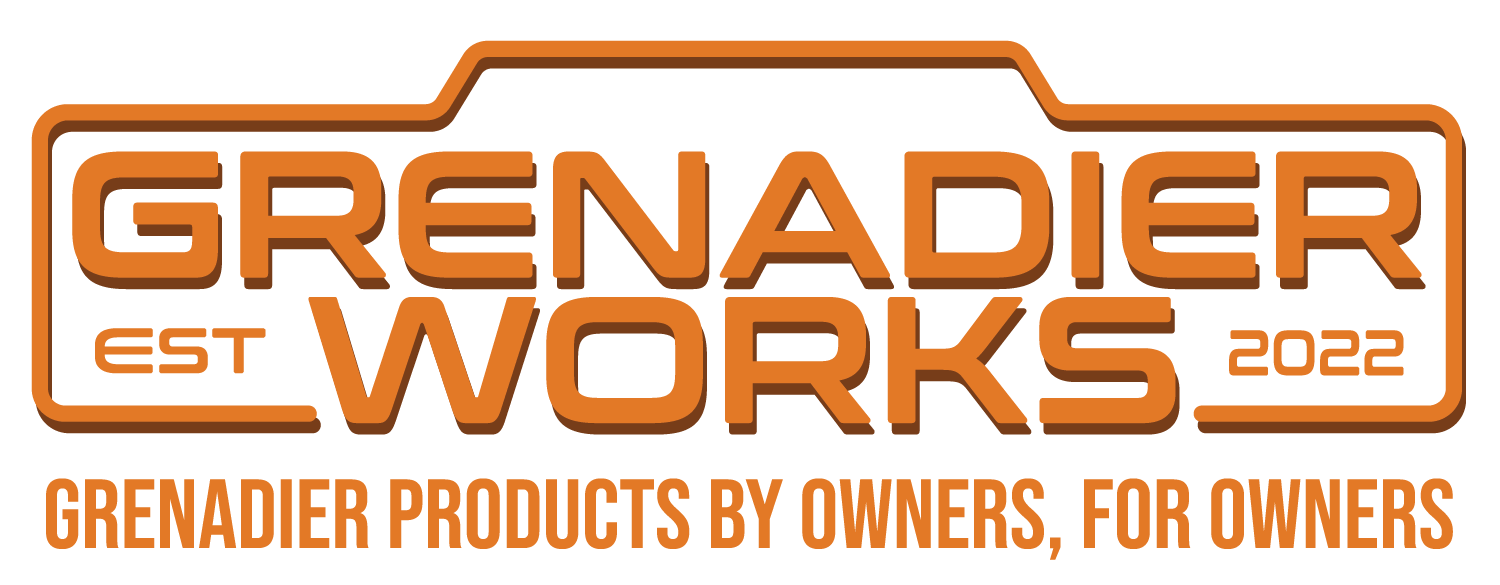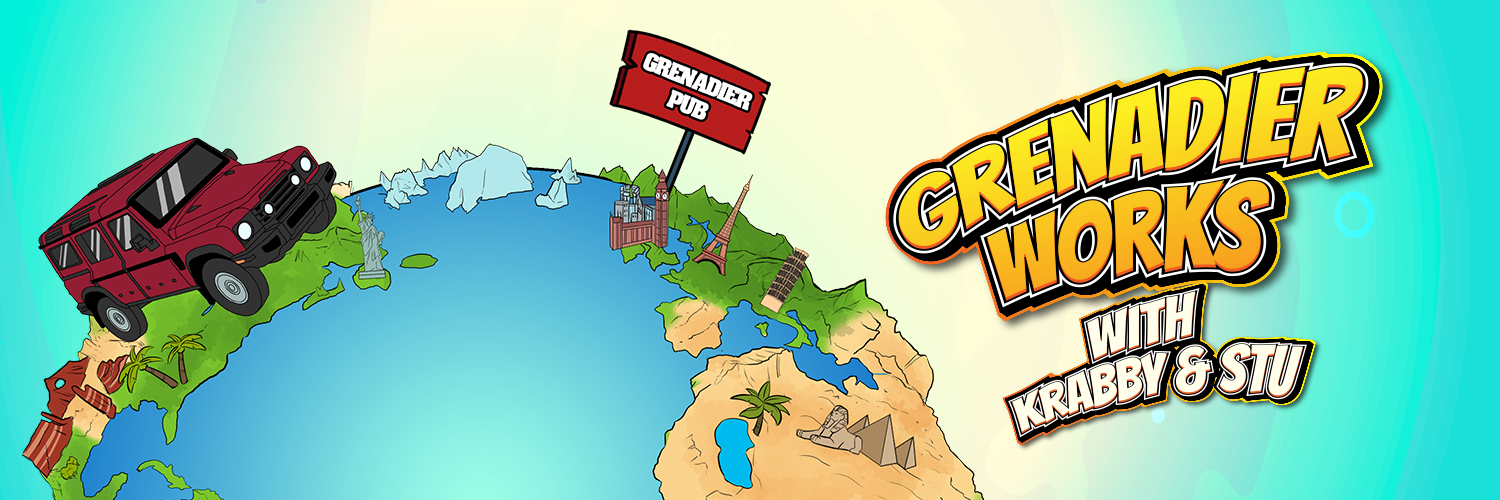My friend Horst (the horse) would love to have an additional set of airline rails above the rear windows. Has anyone done that yet? As far as i know they are usually mounted with threaded rivets and a good portion of sikaflex car body glue. Where should the rivets go? Are there any drawings of this section of the body out there? How much load can i expect this rail being able to carry?

The Grenadier Forum
Register a free account today to become a member! Once signed in, you'll be able to contribute to the community by adding your own topics, posts, and connect with other members through your own private inbox! INEOS Agents, Dealers or Commercial vendors please use the contact us link at the bottom of the page.
You are using an out of date browser. It may not display this or other websites correctly.
You should upgrade or use an alternative browser.
You should upgrade or use an alternative browser.
There are several strong reasons to mount an external side panel using both the top and bottom airline rails:
1. Weight Distribution:
Most existing side panels are mounted either on the gutter or the rail screws. This requires them to extend out around the gutter and then back in again. Not ideal, especially given the Victorian proportions of the gutter. My Molle panels, including the canister holders, are quite heavy. By adding a second (top) rail mount, the entire structure could be designed as a lightweight, rigid frame instead of relying on bulky brackets.
2. Ease and Speed of Use:
Airline rails allow for quick mounting and removal. I don’t always need my external side panels. They increase wind resistance and slightly obstruct the rear view. Being able to attach or remove them quickly would make a huge difference in practicality.

1. Weight Distribution:
Most existing side panels are mounted either on the gutter or the rail screws. This requires them to extend out around the gutter and then back in again. Not ideal, especially given the Victorian proportions of the gutter. My Molle panels, including the canister holders, are quite heavy. By adding a second (top) rail mount, the entire structure could be designed as a lightweight, rigid frame instead of relying on bulky brackets.
2. Ease and Speed of Use:
Airline rails allow for quick mounting and removal. I don’t always need my external side panels. They increase wind resistance and slightly obstruct the rear view. Being able to attach or remove them quickly would make a huge difference in practicality.
Do you mean like this? I installed 1,5 years ago - so 60.000 km . Both sides.
On one side I installed a water tank (25kg) , the other side a box (also um to 25 kg). I used Sika us primer an NO rivets.
If you need more Info, let me know.
On one side I installed a water tank (25kg) , the other side a box (also um to 25 kg). I used Sika us primer an NO rivets.
If you need more Info, let me know.
Attachments
Ja genau so! Tell us more about the process of glueing it. Is it complicated? I am carrying 2x20l fuel tanks. Not for very long but sometimes on demanding terrain like corrugations. Will it hold?
rob88
Grenadier Owner
You must find the internal roof structure to anchor the rivnuts. Just the outer sheet metal won't hold much weight. Without hitting the structure, a loaded rail could tear out. It's a risky DIY job.My friend Horst (the horse) would love to have an additional set of airline rails above the rear windows. Has anyone done that yet? As far as i know they are usually mounted with threaded rivets and a good portion of sikaflex car body glue. Where should the rivets go? Are there any drawings of this section of the body out there? How much load can i expect this rail being able to carry?
View attachment 7910969
Yes please. Some more info on installation instructions and materials used please. That’s a much neater solution than using those grab rails.Do you mean like this? I installed 1,5 years ago - so 60.000 km . Both sides.
On one side I installed a water tank (25kg) , the other side a box (also um to 25 kg). I used Sika us primer an NO rivets.
If you need more Info, let me know.
Well, at first you need a airline rail that is designed to be glued. The difference is actually that they have a slightly bigger surface to put glue on.
Than I used two products from Sika. The so called Aktivator 205 and the glue Sikaflex 554.I used the adhesive in black, since I used black rails as well. The function of the Aktivator is not only it cleans, but rather works ad a primer.
Read the instructions on the products and it will work. As always in gluing: work clean and use the product as it is describted in the menue.
The distance of the upper rail to the lower one depends of cause on the molle etc thatvyoubwanna fix.
The adhesive needs a certain thickness. I used 3 little metal pins in the right thickness to keep the distance between the raul and the car and pulled them out, before the adhesive is totally cured.
What helps to fix the rail until the adhesive is cured, is a little support-frame. See picture below.
The benefits of glueing from my perspective:
1. no wholes in the car.
2. The adhesive compensates any vibration far better than any bolts or rivets or something else.
As mentioned, I have it fixed since two years, using the car heavely an put up to 25 kg on it and even a „table“ to it. Works absolutely fine.
Than I used two products from Sika. The so called Aktivator 205 and the glue Sikaflex 554.I used the adhesive in black, since I used black rails as well. The function of the Aktivator is not only it cleans, but rather works ad a primer.
Read the instructions on the products and it will work. As always in gluing: work clean and use the product as it is describted in the menue.
The distance of the upper rail to the lower one depends of cause on the molle etc thatvyoubwanna fix.
The adhesive needs a certain thickness. I used 3 little metal pins in the right thickness to keep the distance between the raul and the car and pulled them out, before the adhesive is totally cured.
What helps to fix the rail until the adhesive is cured, is a little support-frame. See picture below.
The benefits of glueing from my perspective:
1. no wholes in the car.
2. The adhesive compensates any vibration far better than any bolts or rivets or something else.
As mentioned, I have it fixed since two years, using the car heavely an put up to 25 kg on it and even a „table“ to it. Works absolutely fine.
Attachments
Glueing is quite robust, I used it on my camper for airline rails and solar panels. It is now 5 and 6 year in use, to problem at all.
A good overview you can find here:

 eshop.wuerth.de
If you scroll down on that page, there is a table showing what kind of primer to use on what material.
eshop.wuerth.de
If you scroll down on that page, there is a table showing what kind of primer to use on what material.
A good overview you can find here:

Buy Bond and Seal structural adhesive online | WÜRTH
Bond + Seal structural adhesive ▶ Large product range ✓ Fast delivery ✓ Purchase on account ✓ For trade customers only ▶ Buy from Würth!
Similar threads
- Replies
- 0
- Views
- 236
- Replies
- 1
- Views
- 273
- Replies
- 23
- Views
- 2K
- Replies
- 13
- Views
- 656
